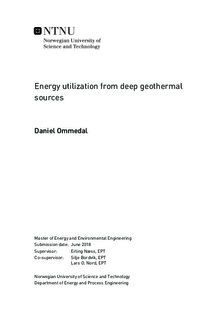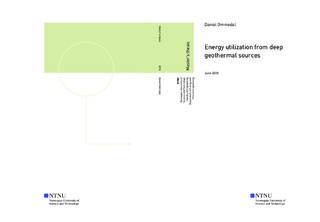| dc.description.abstract | Recently, heat extraction from supercritical water (i.e. high pressure and high temperature) has received significant attention. Supercritical water from aquatic reservoirs several kilometers below the surface are led to the surface, and the thermal and pressure energy is converted to electricity in steam turbines. This technology is presently on the experimental/demonstration stage, but the potential is huge.
A case study is conducted to explore the potential for electric power generation from a supercritical geothermal reservoir situated 5 km below the surface with a temperature and pressure of 500℃ and 230 bar, respectively.
Evaluations of the fluid composition of deep geothermal wells at the most significant geothermal sites on Iceland, prove that the chemical composition of geothermal fluids highly depends on the geologic condition of the reservoirs.
Based on the laws of thermodynamics, a program for calculating temperature, enthalpy and pressure variations during extraction from reservoir to wellhead for high temperature and high pressure geothermal fluids is obtained. Calculations on the case study reveal a pressure drop of 70 bar and a temperature loss of 55℃ during extraction, resulting in a superheated fluid at 459℃ and 160 bar available at the wellhead.
The wellhead condition is further analyzed for electric power production by evaluating five power cycle designs. The most efficient design, containing three turbines, two heat exchangers and one throttling valve, resulted in a calculated electrical power output of 38.37 MWe, a total efficiency of 24% and a predicted energy production of 302.5 GWh/year.
These results suggest that if the geothermal power cycle for the most efficient design analyzed could be realized with the given assumptions, it would be one of the (if not the) most efficient geothermal power plants worldwide. | |

